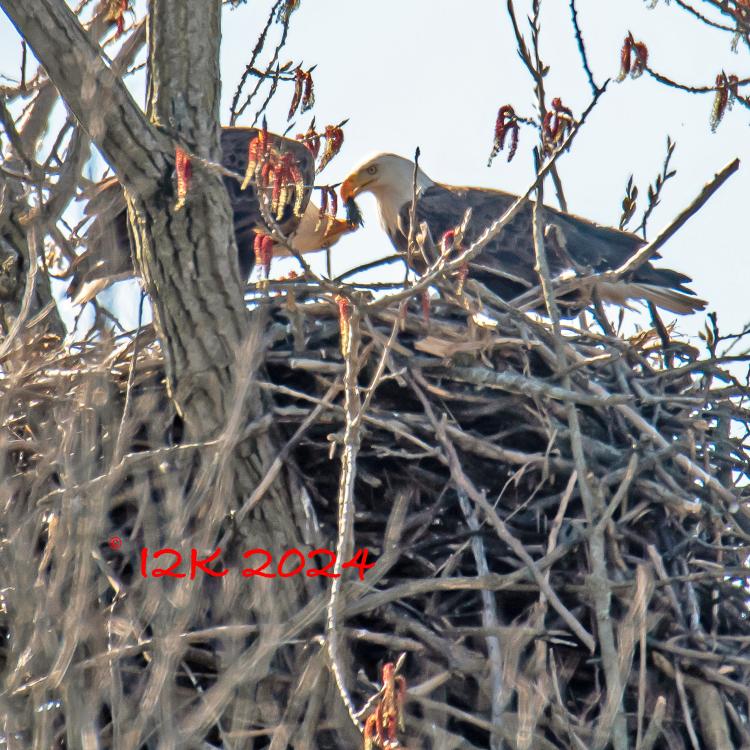Reader Stephen Ledbetter shared this photo of bald eagles delivering food to their eaglets in Pickerington Ponds Metro Park.
Sue Gamble
Q. Hi, Chip: I Just wanted to tell you how much I enjoyed your article “Spring on the wing” in the March 2024 issue of Ohio Cooperative Living print magazine. It was well-written and informative. I had always wondered why some of the red-winged blackbird’s wings were red and some were yellow. Now I know!
A. Thanks for taking the time to write, Sue. I, too, had wondered why some red-winged blackbird males had red epaulets and some had yellow. When I came across the explanation while doing research for the article, I knew I had to include that information it in my story. For readers of the magazine who may have missed the paragraph of explanation the first time around, here it is again:
Famed ornithologist John Eastman wrote of redwings, “…males often stray when seeking food or vacant territories, frequently trespassing onto occupied territories [of other male redwings]. When they do, they cover their red ‘badges’ with black scapular feathers of the wing so that only the lower yellow margins of the epaulet show, thus reducing chances of being attacked by the territory holder.”
Stephen Ledbetter
Q. Hi, Chip: I thought you might like this photo taken April 10, 2024, of a mated pair of two adult bald eagles at Pickerington Ponds Metro Park. The park is owned and operated by Columbus and Franklin County Metro Parks, and the nest is located just North of Wright Road. One of the adult eagles had just arrived at the nest with food for their eaglets when I took the photo.
A. An excellent photo, Stephen! Thanks for sending; I will share it with other Ohio Cooperative Living readers. Bald eagles have done extremely well in Ohio during recent decades. From a low of just four nests remaining in the state in 1979, Ohio now boasts more than 900 bald eagle nests and the population continues to soar! It’s one of the great wildlife management success stories — both in the Buckeye State and nationally — of the late 20th and early 21st centuries.
The majority of eagle nests in Ohio are located along the shore of Lake Erie, but nests occur in all 88 counties. They are primarily fish-eating birds, and as your photo shows they will take prey other than fish, including even scavenging for food, at times.










